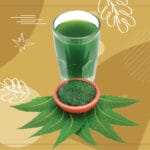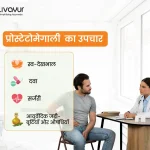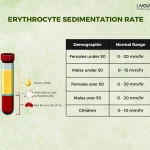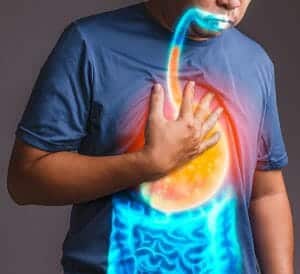This article is reviewed by an expert
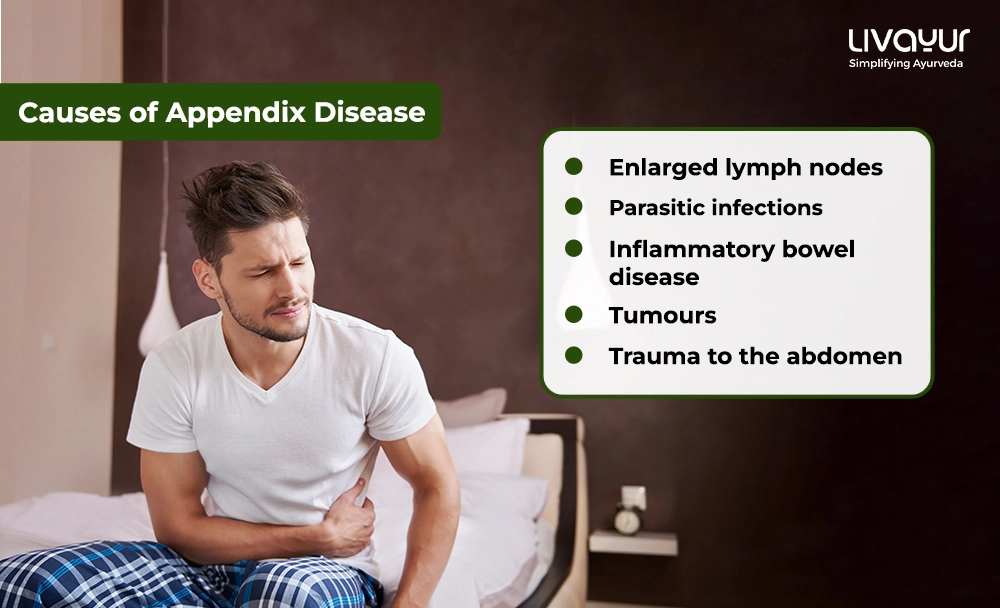
The appendix is a small, tube-like organ located in the lower right side of the abdomen. The average length of this tubular organ is 9 cm. The anatomical name of the appendix is Appendix Vermiformis. The term vermiform has a Latin origin. It means ‘worm-like’ and ascribes to its extended, tubular pattern of the appendix organ. [1]
The function of the appendix is not well understood, but it is believed to play a role in immune function and the digestive process. Although it is not essential for survival, a blockage or inflammation of the appendix can lead to a potentially life-threatening condition known as appendicitis. Appendicitis causes excruciating pain, nausea and even diarrhoea in some cases. [1] Studies show that males are more prone to getting appendicitis than females. [2]
In this article, we will discuss the appendix symptoms, causes, tests, and treatments of appendix disease. Read on to learn more:
Where is the Appendix Located? [1]
Before learning more about appendix and the condition of appendicitis, it is important to understand where the organ is actually located.
The appendix, a distinct diverticulum or bulging pouch-like organ arising from the posteromedial cecal border, is located near the ileocecal valve (a sphincter muscle band at the junction between the small intestine’s last part and the large intestine’s starting part). The appendix base can be reliably located near the meeting point of the Taenia coli (smooth, longitudinal muscular ribbons present on the outer colonic wall) at the cecum’s tip.
Common Appendix Symptoms [1], [3]
Appendix disease, or appendicitis, is typically characterized by pain in the lower right side of the abdomen. The pain may start as a dull ache and gradually intensify, becoming severe and sharp. Initially the pain may be a diffused type and later, as the inflammation progresses, it may become more localized. Other common symptoms of appendix disease include:
- Loss of appetite
- Nausea and vomiting
- Fever and chills
- Generalized malaise
- Urinary urgency or frequency
- Abdominal swelling
- Diarrhoea or constipation
- Inability to pass gas
The symptoms of appendix disease are generally the same in both males and females. However, in case of appendix in women, the pain may be mistaken for menstrual cramps or other gynaecological conditions. This can lead to a delay in diagnosis and treatment, which can increase the risk of complications.
In some cases, the pain may start in the middle of the abdomen and gradually move to the lower right side. This is known as a “referred” pain and can make the diagnosis of appendicitis more difficult.
It is important to note that the symptoms of appendix disease can vary between individuals and may not always follow the same pattern. In some cases, there may be no symptoms at all, or the symptoms may be mild and vague. However, if you experience any of the above symptoms, it is important to seek medical attention immediately, as untreated appendicitis can lead to serious complications.
Causes of Appendix Disease [3]
The exact cause of appendix disease is not well understood, but it is believed to be due to a blockage of the appendix. This blockage can be caused by a variety of factors, including:
- Hardened faecal matter (known as a fecalith)
- Enlarged lymph nodes
- Parasitic infections
- Inflammatory bowel disease
- Tumours
- Trauma to the abdomen [3]
Appendix Tests [3] [5]
If your doctor suspects you have appendix disease, they may order one or more tests to confirm the diagnosis. These tests may include:
- Physical examination: Your doctor will examine your abdomen for signs of inflammation and tenderness.
- Blood tests: A blood test can help to determine if you have an infection and how severe it is.
- Urine tests: A urine test can help to rule out other conditions that may be causing your symptoms.
- Imaging tests: A CT scan, ultrasound, or X-ray can help to visualize the appendix and determine if it is inflamed or infected.
Treatment of Appendix Disease [3] [5]
Surgical Intervention:
The treatment of appendix disease usually involves surgery to remove the inflamed or infected appendix. This procedure is known as an appendectomy and can be performed using two different techniques:
- Laparoscopic Technique: Laparoscopic surgery involves making several small incisions in the abdomen and inserting a laparoscope, a thin tube with a camera and surgical tools attached to it, to remove the appendix. This technique is minimally invasive and has a shorter recovery time compared to open surgery.
- Open Surgery Technique: Open surgery involves making a larger incision in the abdomen to remove the appendix. This technique is typically used when the appendix has ruptured or when the surgeon needs to remove other organs or tissues in the abdomen.
- The Post-surgery Care: After surgery, patients are usually advised to rest and avoid strenuous activities for a few weeks. They may also be prescribed antibiotics to prevent infection and pain medication to manage postoperative pain.
Non-surgical Intervention:
In some cases, if the appendix has not yet ruptured, antibiotics may be given to treat the infection and prevent the appendix from rupturing. However, this approach is less common and may not be as effective as surgery in preventing future episodes of appendicitis. [4]
Home Remedies for Appendix
Though surgery is unavoidable if you are suffering from appendicitis, yet the use of certain home remedies for appendix can help manage the pain and discomfort. Some of the best home remedies are listed below:
- Take Ginger: Ginger or adrak comes with anti-inflammatory properties and can help manage the pain and inflammation associated with appendicitis. You may take ginger in the form of ginger tea, ginger supplements or simply chew the fresh ginger root. [6]
- Use Turmeric: Turmeric or haldi has a compound called curcumin which can help in reducing the pain and inflammation associated with appendix disease. You may take turmeric in the form of turmeric supplements, turmeric tea, or may simply include turmeric in your meals. [7]
- Include Garlic: Garlic or lahsun is another powerful ingredient that can help fight the infection and pain associated with appendix disease. Also, certain compounds in garlic are anti-inflammatory in nature. You may include garlic in your meals or may consume fresh, raw garlic cloves or may even take garlic in the form of supplements or capsules. [8]
- Increase your fluid intake: Increasing the fluid intake may help in managing the symptoms of appendicitis. Intake of fluid helps in eliminating toxins from the body and reducing inflammation. Increasing fluid intake also helps deal with constipation, an issue which may worsen appendicitis symptoms.
FAQs
1. What is the appendicitis pain like?
Initially the pain associated with appendicitis is like a diffused cramp. But as the disease progresses, the pain becomes more sharp, localized, and unbearable.
2. Can the appendix disease pain really vanish?
If you are taking painkillers, the pain may be managed momentarily. But it will definitely come back once the effect of the painkiller goes away. The pain can only vanish totally once the inflamed appendix is surgically removed.
3. Is surgery a must in case of appendicitis?
Yes, it is best to remove the inflamed appendix through surgery. If the inflamed appendix is kept just like that, it may cause serious complications and even death.
4. Is worsening of appendix pain a medical emergency?
Yes, it could be a medical emergency as worsening of the pain and its spreading to the other parts of the abdomen may indicate that your appendix has burst.
5. Is chronic Constipation a risk factor for appendix disease?
Yes, Constipation can lead to appendix disease. The inflammation of the appendix may be triggered when the tube joining the appendix and the large intestine get blocked by stool.
Conclusion
The appendix is a small but important organ in the human body. While it may not serve any essential function, it can cause significant pain and discomfort when inflamed or infected. Knowing the symptoms, causes, tests, and treatments for appendix disease can help individuals identify the condition early and seek appropriate medical care.
In summary, some common symptoms of appendix disease include abdominal pain, nausea, vomiting, and loss of appetite. The exact cause of appendix disease is still unknown, but it may be related to a blockage in the appendix or a bacterial infection. Tests for appendix disease include imaging tests such as ultrasound and CT scans, as well as blood tests to check for signs of infection. The primary treatment for appendix disease is surgery to remove the inflamed or infected appendix. This can be done using laparoscopic or open-surgery techniques.
As with any medical condition, it is important to consult with a healthcare provider for an accurate diagnosis and appropriate treatment plan.
Disclaimer:
The information provided in this article is for education and general awareness. It is not intended to substitute any medical advice. Please consult your healthcare professional for any medical information.
References:
- Anatomy, Abdomen and Pelvis: Appendix
- Sex differences in the epidemiology, seasonal variation, and trends in the management of patients with acute appendicitis
- Appendicitis
- Nonoperative Antibiotic Treatment of Appendicitis in Adults: A Survey among Clinically Active Surgeons
- Diagnosis and treatment of acute appendicitis: 2020 update of the WSES Jerusalem guidelines
- Anti-Oxidative and Anti-Inflammatory Effects of Ginger in Health and Physical Activity: Review of Current Evidence
- Anti-Inflammatory Effects of Curcumin in the Inflammatory Diseases: Status, Limitations and Countermeasures
- Antioxidant, anti-inflammatory, and antimicrobial properties of garlic and onions



